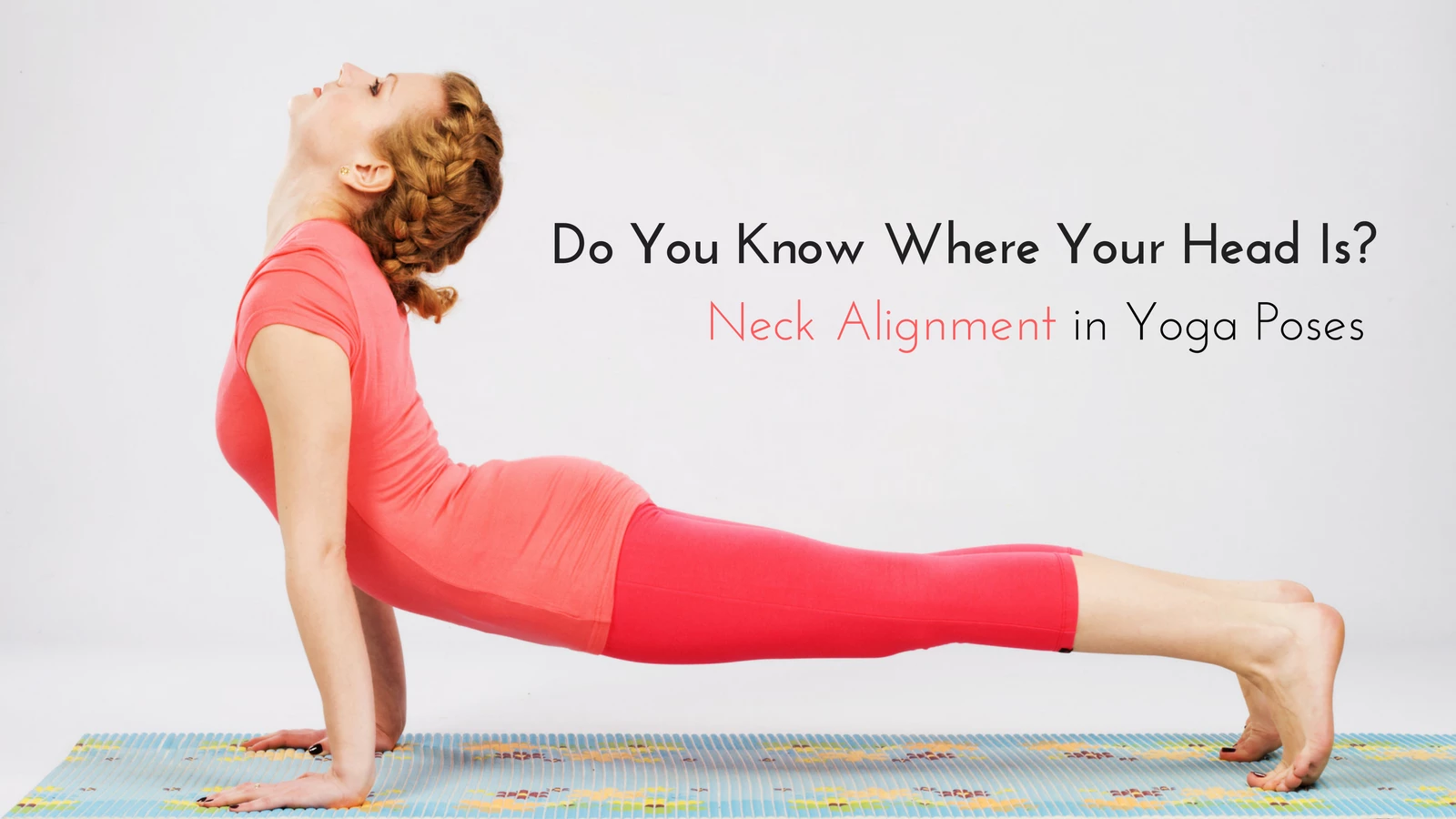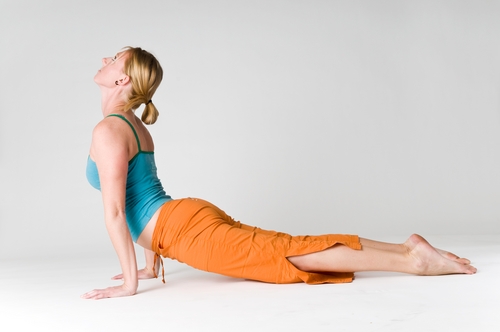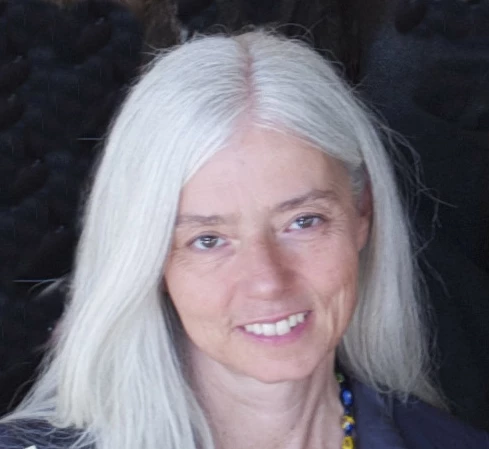Head Position in Yoga: Do You Know Where Your Head Is?

Have you ever heard or said something like this? “Give me some time to figure out where my head is.”
It’s often a good idea to step back from a challenging situation to gather your thoughts. The first thing that comes into our heads—or out of our mouths—in response to a difficult situation is not always the most skillful choice. Knowing where your head is in a challenging situation is not always readily apparent.
How is Your Head Aligned During Asanas?

As I peruse Asana photos online and observe students in class, it appears that knowing where one’s head is physically in space might also be a tricky proposition. More often than not, in poses such as Upward Facing Dog Pose (Urdva Mukha Svanasana), Plank Pose (Chaturanga Dandasana), and Cobra Pose (Bhujangasana), people’s heads are thrown back, their necks hyperextended. In standing yoga poses such as Triangle Pose (Trikonasana), heads are all over the place—overly rotated, hyperextended, or hanging like dead weight. It’s also common to see neck hyperextension in forward bends such as Pyramid Pose (Parsvottanasana) and Seated Forward Bend Pose (Paschimottanasana).
Not only does a hyperextended neck—in any yoga pose—carry the potential to cause neck discomfort, but it also places the hyoid bone in a position that renders any sort of core stability impossible. (You can read more about the hyoid bone here.) My experience is that it also causes mental agitation.
We’ve All Done It—Hyperextension in Yoga

If it’s not a healthy position for the head and neck, why is hyperextension so prevalent? Here’s what I think: According to a developmental movement theory I learned from Donna Farhi many years ago, during our development as infants, lifting our heads while lying in a prone position is our first way of reaching out to the world around us. Lifting our heads precedes pushing up—arching our lumbar spines. This is actually how we originally formed the concave curves in our spines, the lumbar and cervical curves. (The convex curves, the sacral and thoracic curves—form as we develop in the fetal position in utero.)
We carry this developmental habit in our bodies. When we endeavor to create or maintain a lumbar curve, we often unconsciously throw our heads back. So, for example, when we move into a forward bend with the intention of maintaining a “flat back,” we tilt our heads back in order to increase our lumbar curve.
In backbends, we may unconsciously tilt our heads back in order to facilitate a deeper lumbar curve and, therefore, a deeper backbend. I’m honestly not sure why people tilt their heads back in Chaturanga Dandasana. Maybe it’s just because the habit has been handed down from teachers to students over the years. But I know that it adds a lot of unnecessary struggle to the yoga pose (see the above-referenced article on the hyoid bone).
So, while there appears to be a developmental reason for tilting our heads back in order to encourage a concave lumbar curve, it’s no longer necessary to employ this strategy as we become adults. We can be mindful of maintaining lumbar curve integrity without tilting our heads back. In yoga practice, throwing our heads back, in most poses, disconnects the head from the present experience of our practice. If the intention of asana practice is to merge mind and body, disconnecting our heads and cervical spines from the rest of our body is counterproductive.
The Subtle Art of Finding Your Head Position in Yoga
It’s not always easy to know where your head is in relation to your spine. Depending on the pose you’re practicing, your overall structure, the shape of your spine, and myriad other factors, a knowledgeable teacher may be able to help you find this connection at least some of the time. But the true understanding of whether or not your head is connected in your poses comes from inside.
As Douglas Harding famously wrote in his classic book, On Having No Head, our heads are the only part of our bodies we can’t see. The only way for us to perceive them is through the moment-to-moment sensations we feel when we tune in. And tuning in is the best way to know where your head is, both on and off the mat.
The most reliable way I’ve found to assess whether my head is connected is to be aware of the energetic sensations inside my skull, where the brain resides. For example, when my neck is hyperextended, and my head tilts back, my brain space feels agitated and edgy. If I let my head hang down, my brain space feels heavy and dull. When my head is connected, and my cervical spine follows the trajectory of the rest of my spine, the inside of my skull feels quiet and spacious.
How to Practice a Healthy Head Position in Yoga

Begin by exploring this in any forward bend or backbend. Choose a simple forward bend, such as Standing Forward Bend Pose (Uttanasana), or a simple back bend, such as Cobra Pose (Bhujangasana). Tune into what you feel inside your head as you move your head slowly backward and forward. Find the “sweet spot” where your face relaxes and your mind feels spacious and quiet.
Try a few standing poses, finding the head position that allows your brain to feel quiet. In poses such as Trikonasana (Triangle Pose), the pattern is often to let your head hang down sideways or to throw your head back and twist it to look upward. What happens to your brain—and to your breathing—when you move to these extremes?
In yoga twists, we often turn our heads way past the trajectory of the rest of the spine. Experiment with the rotation of your head in twists, too. Where is your sweet spot?
Accessing the vast sea of silence, the quiet mind is the purpose of yoga practice. Sometimes, that access can be as simple as knowing where your head is.
 Charlotte Bell began practicing yoga in 1982 and began teaching in 1986. She was certified by B.K.S. Iyengar in 1989 following a trip to Pune. In 1986, she began practicing Insight Meditation with her mentors Pujari and Abhilasha Keays. Her asana classes blend mindfulness with physical movement. Charlotte writes a column for Catalyst Magazine and serves as editor for YogaUOnline. She is the author of two books, Mindful Yoga, Mindful Life, and Yoga for Meditators, both published by Rodmell Press. She also edits the Hugger Mugger Yoga Products¹ blog and is a founding board member for GreenTREE Yoga, a non-profit that brings yoga to underserved populations. A lifelong musician, she plays oboe and English horn in the Salt Lake Symphony and the folk sextet Red Rock Rondo, whose 2010 PBS music special won two Emmys.
Charlotte Bell began practicing yoga in 1982 and began teaching in 1986. She was certified by B.K.S. Iyengar in 1989 following a trip to Pune. In 1986, she began practicing Insight Meditation with her mentors Pujari and Abhilasha Keays. Her asana classes blend mindfulness with physical movement. Charlotte writes a column for Catalyst Magazine and serves as editor for YogaUOnline. She is the author of two books, Mindful Yoga, Mindful Life, and Yoga for Meditators, both published by Rodmell Press. She also edits the Hugger Mugger Yoga Products¹ blog and is a founding board member for GreenTREE Yoga, a non-profit that brings yoga to underserved populations. A lifelong musician, she plays oboe and English horn in the Salt Lake Symphony and the folk sextet Red Rock Rondo, whose 2010 PBS music special won two Emmys.



